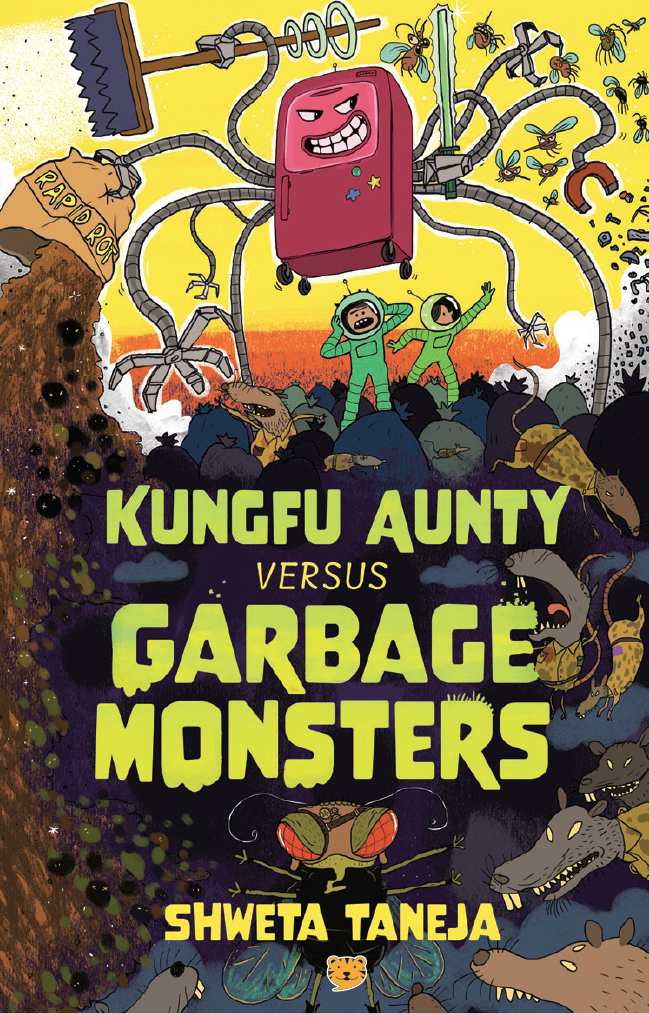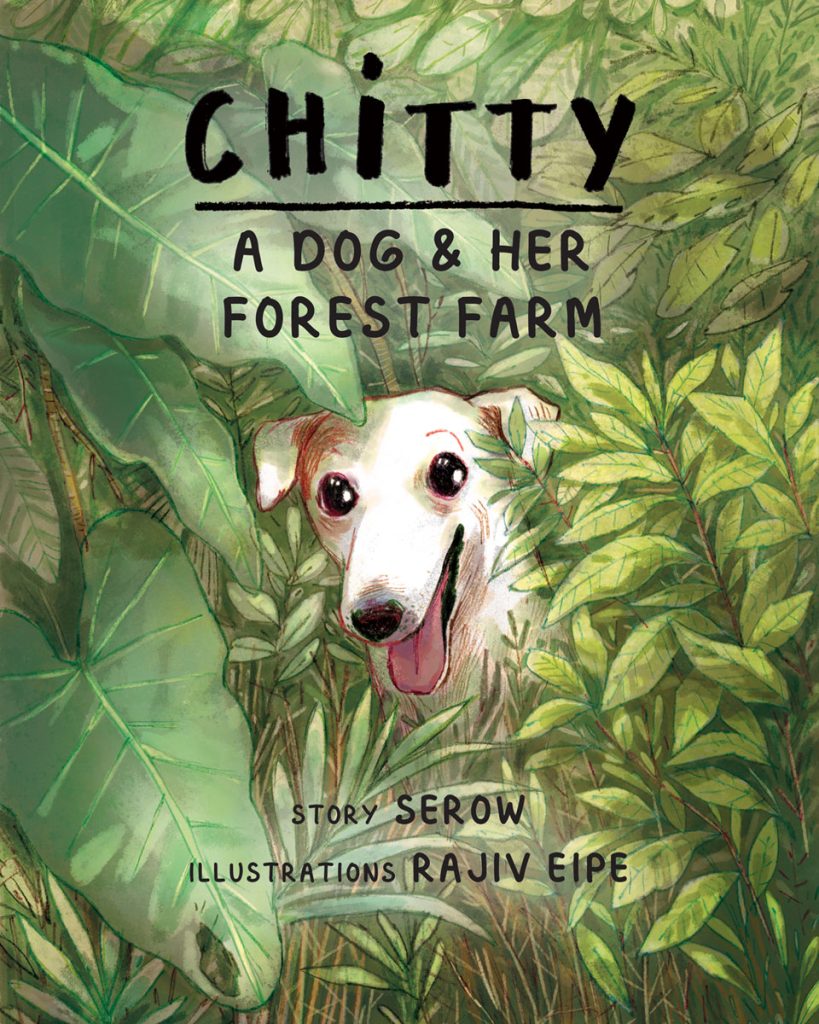Lakshmi Siddi lives deep in the thick, evergreen forests of the Western Ghats of India, in a region called the Malnad. Her home is located on a little lip of land sticking out of a forested slope. She and her family have an orchard and kitchen garden that they tend. A stream flows by at the bottom of her land, where her son and his friends often go to catch fish using bamboo traps. This is an idyllic setting, but tough since you have to hike many kilometres to get to the nearest bus stop to go anywhere. When the monsoon rain comes lashing down, you also have to deal with blood-sucking leeches.
Hardly any sunlight reaches Lakshmi’s forest food garden and she cannot grow the usual range of vegetables that need a lot of direct sunshine. But she does have some hidden treasures in there that live and grow underground. They make it from her garden to her kitchen, becoming part of the delicious foods that Lakshmi cooks and loves to serve her family and friends. These underground denizens are tubers which are an important part of the local cuisine.
Tubers thrive in the shade, are very hardy, and are both tasty and nutritious. There is a huge diversity of tubers and they come in a variety of shapes and sizes.
When tubers are mentioned, many of us only think of potatoes and stop there. The truth is that we have more native tubers in India than we might have ever imagined. Each of them is special and can be made into countless dishes. Move over potato chips and aloo gobi. Enter with pride tuber biryani, tuber sambar, tuber sabzi, chutney and puran poli, tuber raitha, papad, pickle, and chips. Even tuber ice cream!
If you want to get totally tubered, consider Taro (Colocasia or Arbi) of which at least 10 varieties grow where Lakshmi lives, Elephant Foot Yam (Amorphophallus species), Tapioca, Sweet Potato, wild Arrowroot, Turmeric, and Ginger. And these are just some of the possibilities. Tubers provide generously too. Some yams, for example, may look like a simple, little plant above ground, but this could be just the visible part of a huge, 6-foot long underground giant, branching out in all directions, almost like octopus arms!
In a bid to make tubers more popular and people aware of their goodness, Lakshmi and her friend Renuka recently carried two sackfuls to the city of Bengaluru. They participated in seed and food festival there called the Malnad Mela. They had a splendid time with visitors, who learned all they could from these mistresses of tubers. Lakshmi and Renuka felt it was important for them to make people see that tubers are an important food source for the present and future. They were eager to help people remember again a forgotten food and to encourage them to put it back on their menus. When the women did a tally of their earnings, they had made Rs. 11,000 in two days. A well-deserved, handsome amount for providing wholesome, down-to-earth goodness and wisdom to people before it is lost forever.
In this age of climate change, unpredictable rains, and environmental uncertainties, tubers could provide a vital solution to food crises. The value of tubers is so high that there is even a separate institution of scientists dedicated to discovering more about them — the Central Tuber Crop Research Institute in Kerala.
So, the next time you are near a sabziwallah or the market, do look for these marvellous vegetables and try them out at home. You and your family may be in for some nice surprises.
In the meanwhile, in Lakshmi’s part of the planet, where the forests and rivers are still healthy and human communities are closely connected to nature, tigers occasionally roam where tubers dare to grow!
Lakshmi Siddi’s Arbi YumYum
“I am not sure how old this recipe is, where it came from or how it survived this long.
Lakshmi
I do know though that generations of children and grandchildren have enjoyed this
dish. I hope the kids reading this try it out for themselves and tell us their experience.”
Traditional version
• Roast the tubers on live coals so they get cooked from the inside and the outer charred skin easily comes off.
• Add salt and tamarind
• Add pepper or chilly powder (optional)
Enjoy!
Note: Roasting preserves the nutrition and tastes better than boiling the tubers and throwing away the water. Tamarind helps break down the calcium oxalate crystals in arbhi that cause your throat to itch.
Present version
• Boil the arbi in water
• Drain and peel
• Shallow fry till roasted and crisp in some oil and add salt, pepper/chilly powder, and tamarind to taste.
• Some people add turmeric, jeera, and coriander seed powder too.
Lakshmi says that arbi makes delicious bondas when dipped in a chickpea four (besan) batter to which salt, chilly powder, tamarind, and other spices have been added.
Wanted: Tuber Chefs
Have a tuber recipe to share? Send it to us and you may find yourself starring in a Tuber Cook Book that is being created by Lakshmi and her friends. All selected contributors will get a copy of the Tuber Recipe booklet when it comes out! Please do give us the name of the tuber and exactly how you cook it when writing in.
Tubers Tid-bits
- People forage for tubers in the wild or grow them in gardens. Tubers can even be grown in pots in an urban home and need little care.
- For the amount of energy required in planting and caring for the tuber, the yield is high and far surpasses what we get with many other regular crops.
- Tubers don’t need synthetic fertilisers or pesticides to grow.
- Tubers are not afraid of drought. They will stay quietly underground when conditions are harsh, and go about their business of growing and providing when the time is right.
- Tubers also lend themselves to a variety of traditional and modern foods across the Indian sub-continent and the world over. A tuber cook book would cover a wide range of dishes and run into hundreds of recipes!
- Tubers have medicinal value too that older members of agricultural and forest communities know about. For instance, arrowroot tubers are harvested, dried, powdered and used as baby food or for convalescents. Arrowroot powder is also used to relieve diarrhoea and dysentery while Elephant Foot Yam is eaten to treat piles.
The Tale of Tapioca:
- Tapioca (Cassava) is originally from South America
- In the Malnad, the local name for Tapioca is Baragala Genasu — the drought tuber.
- It certainly lives up to its name, growing fiercely where other plants have difficulty or just die.
- During World War II, the Maharajah of Travancore promoted the growing of Tapioca to tide people over food shortages in his kingdom.
- Soon it became integrated into the cuisine there and Kappa (Tapioca) and fish curry became an important part of the local diet.
- Tapioca is still a popular plant grown in many home gardens of Kerala.





